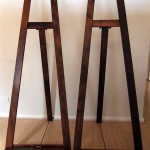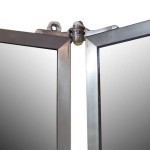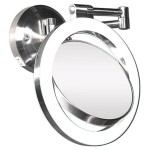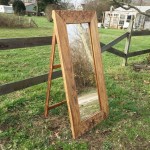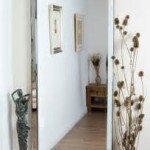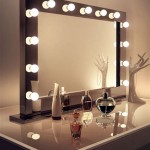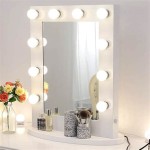Antique Mirror Vanity Table: A Blend of Elegance and Functionality
Antique mirror vanity tables represent a timeless addition to any bedroom or dressing area. They combine the practicality of a dressing table with the aesthetic appeal of antique mirrors, adding a touch of vintage charm and sophistication to a space. This article explores the history, styles, materials, and key features of antique mirror vanity tables, offering guidance on selection, care, and integration into modern interiors.
The history of the vanity table can be traced back to the 17th century in Europe. Initially, these pieces were primarily functional, serving as dedicated spaces for grooming and applying cosmetics. As societal emphasis on personal appearance grew, so did the elaborateness of vanity tables. By the 18th and 19th centuries, they had become prominent furniture pieces, often reflecting the prevailing design styles of the era. The incorporation of mirrors was a natural progression, enhancing both functionality and the decorative aspect of the table.
Antique mirror vanity tables come in a variety of styles, each bearing the hallmarks of specific historical periods. Victorian vanities, for example, are often characterized by ornate carvings, intricate details, and dark wood finishes. Art Deco styles, on the other hand, feature geometric shapes, clean lines, and mirrored surfaces. French Provincial vanities often showcase cabriole legs, delicate curves, and lighter wood tones. Understanding these styles allows individuals to select a vanity table that complements their existing décor and personal preferences.
The materials used in the construction of antique mirror vanity tables contribute significantly to their durability and aesthetic appeal. Wood is the primary material, with common choices including mahogany, walnut, and oak. These woods offer strength and stability, while also lending themselves to intricate carving and detailing. The mirrors themselves can vary in size, shape, and the type of glass used. Antique mirrors often possess a unique patina, adding to their character and vintage charm. Other materials such as metal, glass, and marble may be incorporated for decorative elements, hardware, or tabletop surfaces.
Several key features distinguish antique mirror vanity tables. The size and shape of the table itself are important considerations, as are the number and arrangement of drawers. Some vanities include attached mirrors, while others are designed for use with a separate, free-standing mirror. The presence of a stool or bench further enhances functionality and comfort. Examining these features allows individuals to select a vanity table that meets their practical needs and aesthetic preferences.
Selecting an antique mirror vanity table requires careful consideration of several factors. The overall condition of the piece is paramount, including the integrity of the wood, the clarity of the mirrors, and the functionality of the drawers. Authenticity is another crucial aspect. Genuine antique pieces possess historical significance and craftsmanship that reproductions often lack. The size and scale of the vanity should be proportionate to the room where it will be placed. Finally, personal style and preference play a crucial role in the selection process.
Caring for antique mirror vanity tables requires attention to detail and an understanding of the materials involved. Regular dusting with a soft cloth helps prevent the buildup of dirt and grime. Wood surfaces may benefit from occasional polishing with a furniture wax or polish specifically designed for antique furniture. Mirrors should be cleaned with a non-abrasive glass cleaner and a soft cloth. Avoiding harsh chemicals and abrasive materials is essential to preserving the integrity of the wood and the delicate silvering on the back of antique mirrors.
Integrating an antique mirror vanity table into a modern interior can be achieved seamlessly with thoughtful planning. Consider the existing décor and color palette of the room. A vanity table can serve as a focal point, adding a touch of vintage glamour. Alternatively, it can be integrated more subtly, complementing the overall design scheme. The use of accessories, such as vintage perfume bottles or jewelry boxes, can further enhance the aesthetic appeal of the vanity and create a cohesive look.
The value of an antique mirror vanity table is influenced by several factors, including its age, rarity, condition, and maker. Pieces from renowned furniture makers or specific historical periods often command higher prices. Provenance, or the documented history of ownership, can also significantly impact value. Consulting with an antique appraiser can provide a more accurate assessment of a vanity table's worth.
Purchasing an antique mirror vanity table requires careful research and consideration. Reputable antique dealers and auction houses are good sources for authentic pieces. Online marketplaces can also offer a wide selection, but it's crucial to verify the seller's reputation and authenticity claims. Thoroughly inspecting the piece in person, if possible, is highly recommended before making a purchase.

Sold Out Example Of My Work Antique Dressing Table With Israel

Vintage Vanity Style Pender Peony A Southern Blog

Antique Makeup Vanity Dresser Mirror

Trifold Vanity Transformation A Makeover To See Prodigal Pieces

Antique Dressing Table Mirrors

Vintage Dressing Table With Mirror Thrift Mart

Sold 1920s Antique Vanity With Mirror And Stool Dressing

European Style Antique Carved Wooden Dressing Table With Stool Furniture Design Vintage Tables

Vintage Make Up Vanity And Mirror Dressing Table

Antique Dressing Table Mirrors

